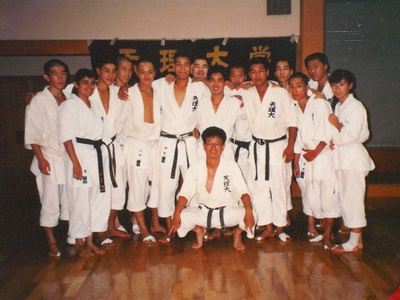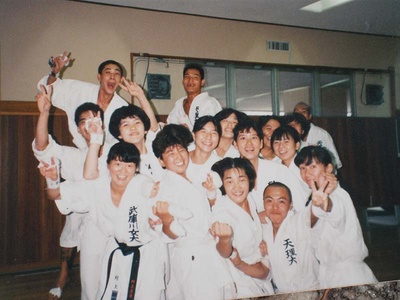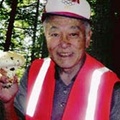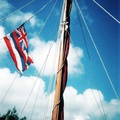Japanese martial arts such as judo and kendo have a strong presence in the Japanese American community. As a youngster, my dad took me to my first karate practice when I was 11-years-old. During my years of training, I engaged karate in a very traditional, yet non-commercial way. At the request of my sensei, I took a trip to Japan in 1989, immersing myself in an intense, week-long karate “boot camp” that was held in Shinshu. This training was called a gasshuku.
With tremendous assistance from Jeffrey Hirai, who was a good friend and “insider,” I had the privilege of joining the Tenri University Karate Team for their gasshuku. The experience of practicing karate in its homeland of Japan was truly exhilarating. Karate came to Japan via Okinawa and continues to evolve into an array of styles. At the college level, practicing karate in Japan was so much different from what I had ever experienced. Some Japanese universities, such as Tenri, receive government support for including karate, along with other forms of budo—judo, kendo, and kyudo (archery)—as part of their collegiate athletic program. For that reason, karate is considered an officially sanctioned sport in Japan.
The most obvious contrast during my training sessions in Japan was the intensity in which karate is practiced. The duration of each session can be quite long and very strenuous, ranging from two to three hours. Mornings began at 6:00 with several miles of running, sprinting, jump-roping, push-ups, sit-ups, and other types of exercises. This gasshuku consisted of three practices per day, over a six day span. During each session, the sensei watched everyone’s motions with a very critical eye. Techniques are practiced over and over again, with the sensei making corrections in posture and form until it is perfect, with an emphasis on discipline to build character and physical stamina.
While I was thrilled to train in karate in its country of origin, there were a few things about practicing karate in Japan that was a bit frightening. It was during training where I first noticed the types of karate-related injuries that can occur. When one of the karateka smiled, it was obvious that his two front teeth had been knocked out. Karate, as practiced in Japan, has an extremely serious nature to it that can sometimes be unnerving. There was no room for any laughing or talking, nor were there any apologies given for knocking down or hurting someone during a practice. One time, there was a black belt who was felled next to me. He was choking and struggling to breathe from a very strong blow to his throat. Instead of saying “sorry” or trying to help him up, his sempai, a more senior karateka, growled, “tatte!!,” which means “get up!!” I began to brace myself for the fact that I could be next on the floor. Fortunately, he recovered.
Another hurdle to overcome was the awkwardness from being a gaijin. Although I am a Japanese American, I was still considered a foreigner. My lack of language skill and knowledge of Japanese dojo etiquette reminded me of how culturally different I was from my teammates. However, regardless of the language barrier, karate itself was our bond. The physical preparation I received prior to coming to Japan allowed me to observe, learn, and complete the practice sessions. Most of all, I was fortunate to be with a great team of people who reached out, and made me feel welcome, after some very challenging workouts.
The final practices were the hardest part of the gasshuku experience, as each blow became increasingly more painful to endure. At that point, I was so sore and fatigued, I just wanted to “drop dead.” But when I would reflect back on all my years of training, and everything sensei taught me, I somehow developed a second wind. We capped off the sixth and final day with a shiai, a practice tournament. When this day arrived, we were all elated, and thankful there were no serious injuries to anyone.
Whether running through a country neighborhood, or being drilled on a particular technique, the one thing I gained from this gasshuku was the uncanny experience of participating in one of the integral forms of budo, in its home context. This experience continues to challenge me to strive to new heights at everything I do. If and when the occasion arises, I would recommend this type of opportunity to anyone who has a deep connection to the Japanese arts, or to someone who would appreciate the opportunity to deepen their knowledge of their area of interest in Japan. The experience can definitely make a positive difference.
*I would like to acknowledge my sensei, Paul Kurose, the late Guy, Roland Kurose, and Jeffrey Hirai for their help in encouraging and preparing me for the gasshuku. I would also like to acknowledge Shane Akagi for his assistance.
© 2010 Thomas Tsutsumoto






